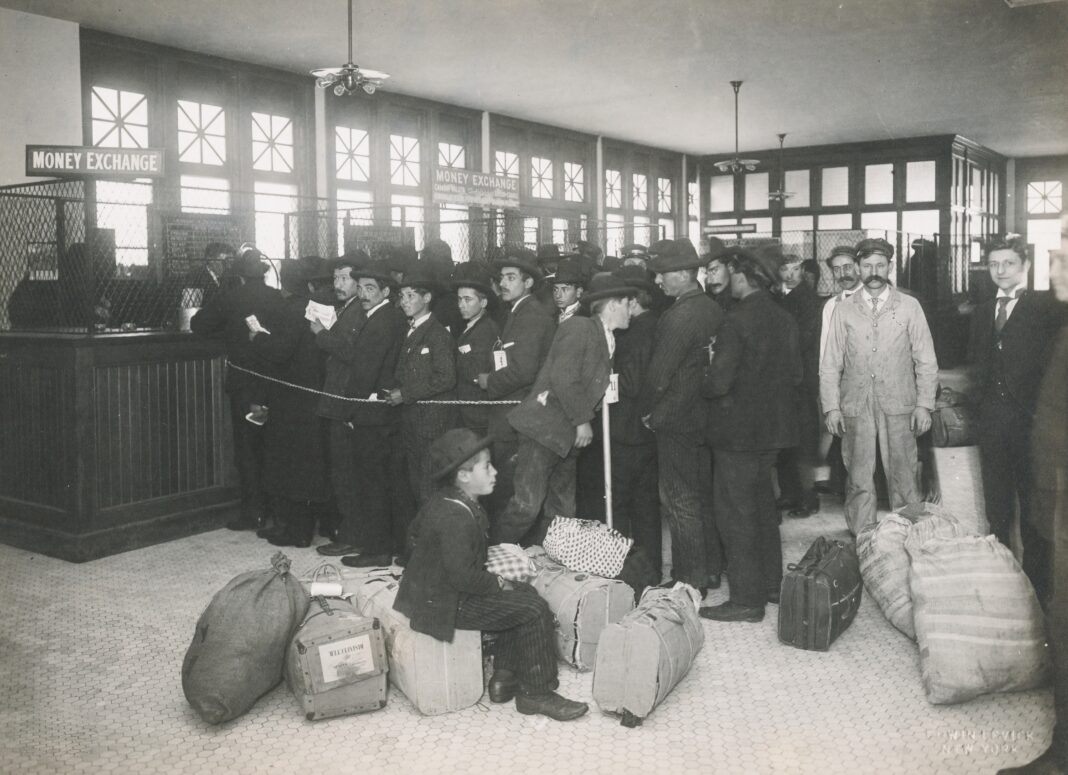To most of us, the globalized, interconnected world is the only world we know. However, it has not always been like that and there are no guarantees that it will remain the same. The period between 1870 and 1914 is designated as the first systematic attempt at globalization. The process enriched the European working class and landowners of the New World and negatively affected European landowners and native-born New World workers. Moreover, it enabled the rise of Germany as a world power and its ambitions for greater geopolitical importance, which eventually caused World War I.
The main lesson we can learn from the first globalization and apply it to the current situation is to ensure the socio-economic security of the workers in the global North, who have lost the most due to trade liberalization. By creating social security for poor people, Western countries can prevent the rise of nationalism. Furthermore, considering the rise of China and its geopolitical ambitions, the world needs to be cautious about potential conflict.
The First Globalization
The first globalization or the first wave of globalization describes the financial and economic interactions and integration between states taking place from 1870 to 1914. It followed technological advancements that lowered transportation costs and reduced tariff barriers. Innovations in the transportation system, such as steamships and railways, made it easier to travel across continents and transport large commodities by land. In the nineteenth century, economic specialization occurred. The former colonies mainly located in south and north America and Australia often referred to as the “New World”, produced food and raw materials, which Europeans transformed into manufactured goods. The development of cheaper and more efficient transportation made it easier to increase the trade of land-intensive products to manufacturers. As a result, the share of exports in world income doubled, reaching approximately 8%. (Collier & Dollar, 2002, p. 24-25).
Mass immigration from Europe to the New World increased the productivity of both the Europeans who left and the ones who stayed. The large-scale production of primary goods required people. Europe was densely populated, while the population in the western hemisphere was low. These conditions motivated many Europeans to look for new opportunities overseas. During the 19th century, around sixty million Europeans migrated to North America and Australia, bringing an overall positive impact on economic growth and welfare. (Collier & Dollar, 2002, p. 25).
Some economic historians believe that similar processes took place in South and East Asia. Lindert and Williamson (2001) in Does Globalization Make the World More Unequal? wrote how millions of people moved from densely populated China and India to neighboring countries. Based on this speculation, the labor movement during the first globalization reached about 10% of the entire world population.
It was not just the labor but also the capital that the New World received from Europe. At the beginning of the first wave of globalization, foreign capital stocks made up a marginal percentage of the New World budget; however, over time, the development of European-style financial institutions and the enhanced information exchange allowed governments to attract European capital. As a result, before World War I, the foreign capital stock share of the GDP of these countries increased from 9 to 32 %.
The first wave of globalization had a positive economic impact on the world, particularly for the New World countries that actively participated in international trade. The annual per capita income increase rate, which was 0.5% for the past 50 years before the first globalization, went up to 1.3%. Countries like Argentina, Australia, New Zealand, and the United States became the leading economies in the world by selling food and other primary commodities, opening up to new immigrants, and capital, and establishing European-style institutions (Collier & Dollar, 2002).
Globalization was economically beneficial for many former colonies that embraced liberal trade practices. However, its effects on different segments of society are not as straightforward. The biggest losers in the New World were workers whose wages went down. Due to the mass immigration, it is estimated that wages in Argentina went down by 22%, 15% in Australia, 16% in Canada, and 8% in the United States. On the contrary, in Europe, emigration raised Irish workers’ wages by approximately 32%, Italian by 28%, and Norwegian by 10% (Collier & Dollar, 2002, p. 25-26). Ultimately, immigration was the most important factor that equalized wages between the Old World and the New World.
Unlike workers, the biggest winners of globalization in the former colonies were land owners because the countries primarily exported food and raw materials. Considering their colonial past, it is not surprising that land itself was unfairly distributed, which determined who benefited from trade. The exception to this tendency was West Africa, where land was owned more equally.
In the case of Europe, landowners were the biggest losers of globalization. The economic effects of globalization changed European societies in a few fundamental ways. First, in various countries, it undermined the power of the aristocracy because the land was their main economic asset. Second, European countries introduced social protectionist reforms, such as public education, worker insurance, and pensions.
Although first globalization was not able to stop the pre-existing trend of increasing global income inequality, it had an unprecedented effect on reducing poverty. For the 50 years before 1870, poverty was falling at the rate of just 0.3 % annually. It increased by 0.8 % during globalization. However, due to the increase in population, the overall number of poor people went up (Collier & Dollar, 2002, p. 26).
World War I and the Return of Nationalism
The successful decades of globalization and liberalization were crashed by World War I, which made countries retreat into nationalism. It can be argued that World War I itself was a byproduct of the first wave of globalization. Economic historians, Adam Tooze and Ted Fertik, in The World Economy and the Great War, emphasize the fact that the war was fought using the raw materials transported internationally by the British shipping companies and paid mostly by American loans (2014, p. 221). In other words, the first systematic attempt to create a global, inter-connected economic structure also enabled the first truly international conflict.
Moreover, the first globalization altered the status quo in terms of power dynamics, which created the foundation for a military conflict. The rise of Germany as an economic superpower in the 19th century happened by embracing liberal economic practices. As German economic and political power grew, so did their geopolitical ambitions and their desire to have a great influence over global trade. One of the common understandings of World War I is that it was Germany, a rising power, challenging Britain, the “status quo” power (O’Rourke, 2022).
World War I motivated countries to return to protectionism. The Nobel Prize-winning economist, Robert Mundell, in A Reconstruction of the Twentieth Century wrote that “the twentieth century began with a highly efficient international monetary system that was destroyed in World War I, and its bungled recreation in the inter-war period brought on the great depression.” (2003, p. 225). States responded to the depression with protectionist policies. The most notable, the United States, the world’s leading economy at that time, introduced the Smoot-Hawley Act. The legislation increased tariffs on imports by approximately 20 %. As a result of the economic restrictions, between 1929 and 1933, American imports fell by 30 % and exports by 40 % (Collier & Dollar, 2002, p. 26).
The protectionist policies undermined the first globalization advances. The export share of world income in 1950 was 5% – almost identical to what it was in 1870. The governments, especially in higher-income economies, implemented regulations that forbade the export of capital. As a result, many lower-economy countries that had liabilities suffered severely (Collier & Dollar, 2002, p. 26).
The rise of nationalism created strong anti-immigration sentiments, particularly towards racial minorities. During the period of 1914–1950, immigration to the United States was only 6 million, which is a significant decline from the 15 million in 1870–1914. Anti-immigration feelings were not solely an economic reaction, as O’Rourke explains, they also had a racial dimension. “Yes, immigration restrictions in the United States were linked to the impact of immigration on wages, but even a cursory examination of the relevant legislation shows an obsessive concern with Asian immigration in particular. No one reading Avner Offer’s account of how anti-Asian racism was ubiquitous throughout the late nineteenth century Anglosphere could be in any doubt that ‘culture’ was a powerful factor underlying late nineteenth-century immigration restrictions,” writes O’Rourke (2022, p.367-368).
The period of nationalism reversed the decline of global poverty and further enhanced economic inequality. The global rate of economic growth fell by a third, which negatively affected the incidence of poverty, returning it to the period between 1820 and 1870. Despite an apparent socioeconomic regress caused by the rise of nationalism, one aspect of the living conditions that continued improvement was life expectancy. It was largely due to the increased accessibility of health innovations (Collier & Dollar, 2002, p. 27).
The Third Globalization
Since then, there has been a return of globalization. The period, starting in the 1980s, in which we are still living is commonly described as the third wave of globalization. It has two main characteristics: technological developments and unprecedented liberalization of trade and capital markets. The development of technology lowered the cost of transporting products globally and enhanced communication. Regarding liberalization, with the facilitation of intergovernmental organizations like the World Bank, the International Monetary Fund, and the World Trade Organization, countries have become increasingly less protectionist in their economic policy, lowering import quotas, tariffs, and other non-tariff barriers. As a result, the world today is as economically interconnected as ever before (Ertekin & Dural, 2004).
Although the process of liberalization started before the third wave of globalization, its effects became the most notable after the 1980s. Arguably, one of the most significant geopolitical events that enlarged the global economic community was the end of the Cold War and the collapse of the Soviet Union and the Eastern Bloc. The breakdown of the communist superpower in 1991 made many political scientists believe that liberal democracy with free trade was an uncontested political structure. The idea has recently become more questionable.
Another important characteristic of the third wave of globalization, which is similar to the first globalization, is a high level of migration. For example, during the period of 1980-2000, international immigration increased from 100 million to 175 million. Although it was largely driven by people fleeing from the former-Soviet countries, the tendency continued in the following decades. In 2010, the number of international migrants reached 213 million. The migrants during 2000-2010 primarily came from Asia and Latin America. The military conflicts in the Middle East and Ukraine that took place after 2010 further increased the level of migration from the global South to the North (Ertekin & Dural, 2004, p. 56-57).
The third wave of globalization was the time when many developing countries managed to capitalize on their abundant labor. During the past decades, labor-intensive manufacturing has been outsourced from the West to lower-income places in Asia and Latin America. For example, in 1980, only around a quarter of the exports of developing countries were manufacturing goods. Since then, it has changed drastically, and already by 1998, the share of manufacturing rose to 80 % (Collier & Dollar, 2002, p. 31-32). This example is a clear demonstration of how the third wave of globalization fundamentally changed the world economy.
There is an increasing backlash in the West against the globalization process, particularly from the workers who have lost the most from the new wave of economic liberalization. In the last few years, we witnessed Britain’s exit from the European Union, the election of Donald Trump, and other right-wing politicians. They often use populist economic messages to attract groups that feel economically dissatisfied with neo-liberal economic practices, as well as cultural nostalgia.
In 2016, professor of Public Policy, John Rennie Short, at the University of Maryland published an article exploring the reasons behind the backlash against globalization. “The backlash against economic globalization is most marked in those countries such as the U.S. where economic dislocation unfolds with weak safety nets and limited government investment in job retraining or continuing and lifetime education,” writes Short. “Indeed, the fear of immigration has resulted in the most dramatic backlash against the effects of globalization, heightening national and racial identities. In the U.S. white native-born Americans moved from being the default category to a source of identity clearly mobilized by the Trump campaign.” In other words, the economic losses of working-class Westerners caused by globalization, paired with the identitarianism after mass migration resulted in the election of right-wing politicians. The changing nature of Western politics makes the future of countries, as well as globalization, uncertain. For that reason, it is even more useful to examine the First Globalization and its aftermath to learn lessons for the future.
The main lesson that we can learn from the first globalization is that globalization is not irreversible. Domestic and geopolitical shocks can have consequences that can undermine the progress made during the globalization process. As Findlay and O’Rourke write in Power and Plenty: Trade, War, and the World Economy in the Second Millennium “It is natural to suspect that the accumulating economic and geopolitical tensions unleashed in the course of each period of peace, prosperity, and trade culminate in successive rounds of conflict, so that wars, rather than being exogenous or external shocks to the world system, have been inherent in its very nature.” (2009, p. xxv)
To further develop this idea using the example of the first globalization and World War I, we see how the rising economic powers that benefited from the liberal economic practices want to translate their economic success into political influence. Germany, which was a beneficiary of the first globalization, challenged the status quo by attempting to enlarge its geopolitical importance. In our time, we see this with China. The East Asian superpower became increasingly aggressive in its geopolitics only after its economic success. Although it is still ambiguous whether China will attempt to gain greater political power through direct military confrontation with the West, politicians, and societies need to remember that the modern-day global conflict will be even more disastrous than the previous ones. The rise of nationalism around the world is another worrying sign that can potentially undermine trade liberalization and cause military conflicts. The setback in trade liberalization will be catastrophic for the global South, particularly its poor, who barely earn living wages.
On a microeconomic level, the main lesson of the first globalization for Western countries is to compensate the working class for the economic losses caused by globalization. Western corporations and economic elites are the main beneficiaries of liberal trade practices. Their wealth has reached an unprecedented level, while there is little improvement for the lower classes. Western governments need to use the wealth of their capitalist elites to ensure the social safety of the rest of the population to make them less vulnerable and more resilient to populist politicians.
Although the first wave of globalization made the world more prosperous overall, it still created both winners and losers. The European working class and landowners of the New World became richer, while European landowners and native-born New World workers’ wealth declined. The globalization process which is taking place today is similar to the first globalization in many ways, including the improvement of technologies, a decline in trade barriers, and a high level of immigration. Considering these similarities, there are lessons we can learn from the past. First, the rise of China and its geopolitical ambitions, as well as the rise of nationalism around the world, should make us cautious about a potential conflict. Second, the Western government should create a stronger social security net to compensate its workers for the loss that they have experienced due to globalization and prevent their further political radicalization.
References
Collier, P., & Dollar, D. (2002). Globalization, growth, and poverty building an inclusive World Economy. Oxford University Press.
Ertekin , M. S., & Dural, B. Y. (2004). International Migration and the globalization of Domestic Politics: A conceptual framework. International Migration and Globalization of Domestic Politics, 19–46. https://doi.org/10.4324/9780203488379-7
Findlay, R., & O’Rourke, K. (2009). Power and plenty: Trade, war, and the World Economy in the Second Millennium. Princeton Univ. Press.
Lindert, P., & Williamson, J. (2001). Does globalization make the world more unequal? https://doi.org/10.3386/w8228
O’Rourke, K. H. (2019). Economic history and contemporary challenges to globalization. https://doi.org/10.3386/w25364
O’Rourke, K. H. (2022). Globalization. https://nyuad.nyu.edu/content/dam/nyuad/academics/divisions/social-science/working-papers/2022/0075.pdf
Persson, T. (2003). Economic Sciences: 1996-2000. World Scientific.
Short, J. R. (2016, November 30). Column: Why there’s a backlash against globalization and what needs to change. PBS. Retrieved January 10, 2023, from https://www.pbs.org/newshour/economy/column-theres-backlash-globalization-needs-change
Tooze, A., & Fertik, T. (2014). The World Economy and the Great War. Geschichte Und Gesellschaft, 40(2), 214–238. https://doi.org/10.13109/gege.2014.40.2.214
Picture The New York Public Library on Unsplash





